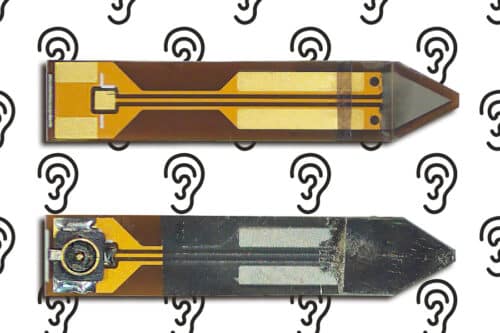This tiny, biocompatible sensor could overcome one of the biggest hurdles to achieving fully internal cochlear implants.

Cochlear implants, revolutionary devices that provide a sense of sound to individuals who are deaf or hard of hearing, have already improved the hearing of over a million people globally, as reported by the National Institutes of Health. Current cochlear implants are only partially internal and rely on external hardware, limiting user activities such as swimming, exercising, or even sleeping with the device on.
In stride towards fully internal cochlear implants, a multidisciplinary research team from MIT, Massachusetts Eye and Ear, Harvard Medical School, and Columbia University has developed an implantable microphone. This microphone matches the performance of commercial external hearing aid microphones and is a key milestone towards a completely internalized cochlear implant.
Microphone Technology
The microphone, a sensor crafted from biocompatible piezoelectric material, detects tiny movements on the underside of the eardrum. Piezoelectric materials generate an electric charge when compressed or stretched. To enhance the device’s performance, the team also created a low-noise amplifier that boosts the signal while minimizing electronic noise. The microphone targets the umbo, a part of the middle ear, which vibrates unidirectionally, facilitating easier detection of movements. Despite the umbo’s minimal motion, measuring a few nanometers, the team succeeded in developing a device capable of detecting these subtle vibrations. The sensor, named UmboMic, is a triangular motion sensor about the size of a grain of rice, composed of polyvinylidene difluoride (PVDF) layers.
The researchers have successfully tested the UmboMic in human ear bones from cadavers, confirming its performance within human speech ranges. This successful testing instils confidence in the potential of the device and paves the way for further exploration in live animal studies.
The researchers highlighted its competitive performance with commercial hearing aid microphones and the potential to inspire further advancements in the field. The research received funding from the National Institutes of Health, the National Science Foundation, and international foundations. This marks a significant advancement towards fully internal cochlear implants, promising enhanced user experience and broader adoption of this life-changing technology.






